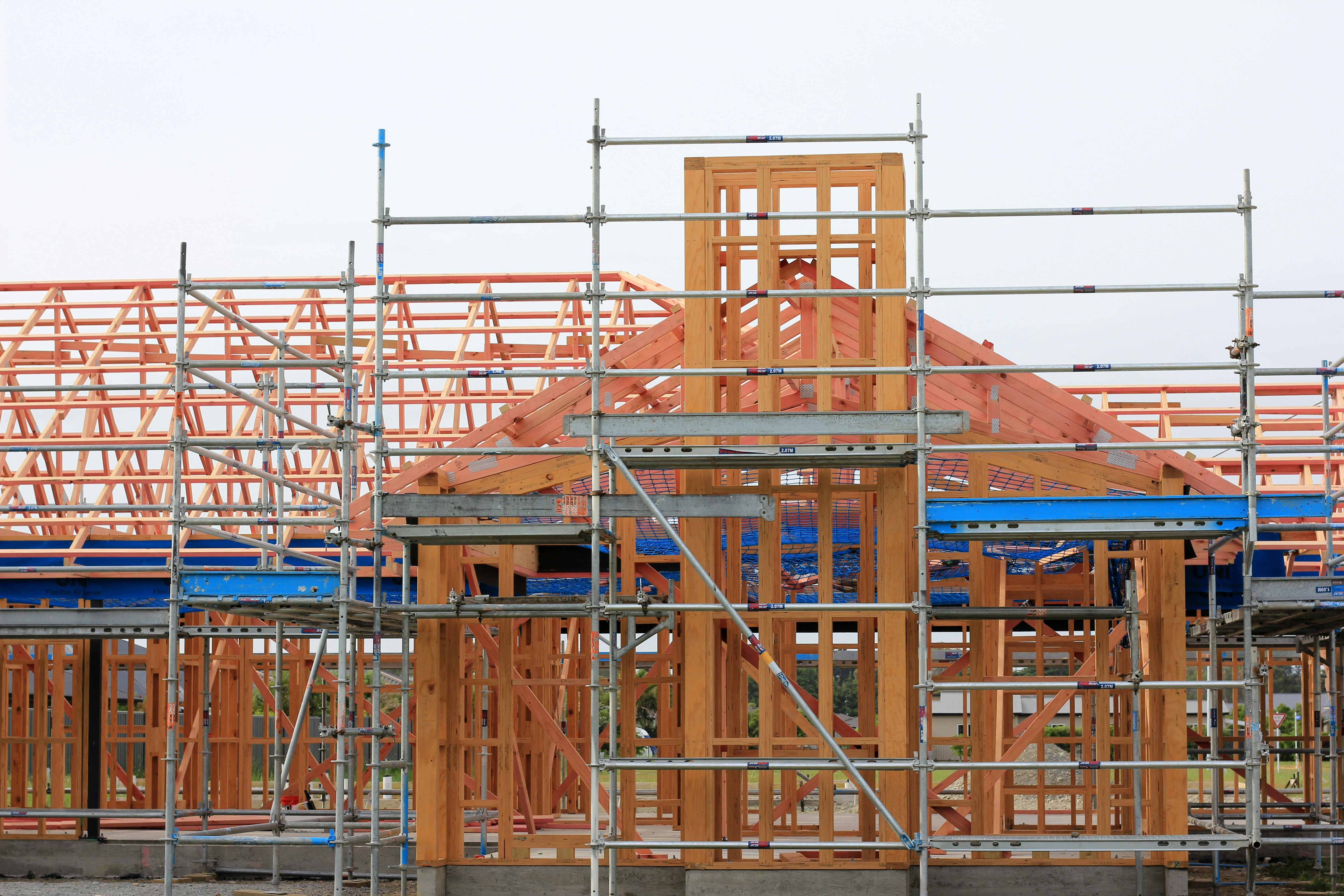
Custom Home Builder Project Management vs Traditional Method
Building a custom home involves many moving parts, making project management a critical factor in its success. Homeowners often wonder how custom home builder project management differs from traditional construction methods. This article breaks down the key aspects of managing a custom build, highlights its advantages over conventional approaches, and addresses common challenges. Readers will learn how efficient project management improves budgeting, scheduling, and subcontractor coordination—leading to a smoother, more predictable building experience.
Key Takeaways
Custom home builder project management emphasizes meeting individual client needs and preferences.
Effective communication among stakeholders enhances collaboration and project success.
Utilizing advanced technology improves efficiency and responsiveness in the building process.
Sustainability practices are increasingly important in modern custom home building projects.
Flexibility allows builders to adapt designs based on client feedback during construction.
Define Custom Home Builder Project Management and Its Key Components

Custom home builder project management is designed to oversee every aspect of a tailored home’s construction, ensuring it meets the client’s vision, budget, and timeline. It involves strategic planning, efficient resource allocation, and seamless stakeholder coordination. Advanced tools and technology help streamline tasks such as scheduling, invoicing, and progress tracking, ensuring smooth execution from start to finish.
Key Objectives of Custom Home Builder Project Management
The primary goal of project management in custom home building is to deliver a high-quality home while maintaining efficiency and cost control. This requires balancing design flexibility with structured execution. Below are the core objectives:
On-Time Delivery – Maintain a well-structured timeline to keep construction on schedule.
Budget Control – Monitor costs, track expenses, and ensure financial decisions align with the project’s budget.
Quality Assurance – Conduct regular inspections to ensure materials and craftsmanship meet client expectations.
Stakeholder Collaboration – To minimize delays and misalignment, foster open communication between builders, subcontractors, and clients.
Tools and Technologies Enhancing Custom Home Builder Project Management
Custom home builders leverage specialized project management software to optimize efficiency and communication. These tools assist with:
Real-time scheduling and progress tracking to minimize delays.
Budgeting and cost estimation features for improved financial oversight.
Document and contract management to keep permits and approvals organized.
Collaboration platforms that enable seamless communication between builders, architects, and clients.
The Role of Stakeholders in Custom Home Builder Project Management
Successful custom home construction depends on clear roles and responsibilities among key players:
Custom Home Builder/Project Manager: Oversees the entire construction process, manages budgets, and ensures milestones are met.
Client/Homeowner: Provides input on design choices, budget considerations, and project approvals.
Architects and Designers: Develop structural plans and design elements that align with the homeowner’s vision.
General Contractors & Subcontractors: Execute construction tasks, ensuring work quality and schedule adherence.
Compare Custom Home Builder Project Management to Traditional Project Management

Custom home builder project management differs significantly from traditional project management in several key areas. It emphasizes unique planning and design methods tailored to individual needs, focusing on architecture and home construction skills. Communication strategies vary, with a greater reliance on technology and collaboration in custom projects. Budgeting and cost control techniques also differ, addressing specific billing concerns for personalized renovations.
Highlight Differences in Planning and Design Approaches
Custom home builder project management requires project managers to focus on the specific needs of their clients, which often leads to unique planning and design approaches. Unlike traditional methods that may follow a one-size-fits-all process, custom builders tailor their strategies to fit individual renovations and home improvement goals. This personalized planning helps ensure that every aspect of the construction meets the client's vision, resulting in a more satisfying outcome:
Emphasis on client-specific needs in planning
Flexible design approaches for personalized renovations
Collaborative decision-making among project managers and stakeholders
Assess Communication Strategies in Both Methods
Communication strategies in custom home builder project management prioritize collaboration among all stakeholders, including builders, clients, and architects. This approach fosters a clear understanding of project goals and timelines, enabling quick decision-making and minimizing misunderstandings. In contrast, traditional project management often follows a more rigid communication structure, which can lead to delays and confusion during the construction process.
Analyze Budgeting and Cost Control Techniques
In custom home builder project management, budgeting and cost control techniques are tailored to fit the specific needs of each project. This involves regular monitoring of expenses against the budget outlined in the contract, allowing for adjustments as necessary to keep the project on track. Unlike traditional methods, which may use a fixed-cost approach, custom builders often adopt a flexible strategy that addresses unique billing concerns and provides more accurate estimates for personalized renovations.
Examine the Advantages of Custom Home Builder Project Management

Custom home builder project management offers notable advantages over traditional methods. It provides greater flexibility and adaptability in project execution, allowing for changes as needed. Enhanced client collaboration fosters a more personal approach throughout the process. Time efficiency and streamlined workflows also contribute to quicker project completion, resulting in a smoother custom home-building experience.
Review Flexibility and Adaptability in Project Execution
Flexibility in custom home builder project management allows for adjustments to be made during the construction process to meet clients' specific needs. For instance, if a client wants to change a design element after reviewing the progress, custom builders can quickly adapt plans rather than adhere to a rigid framework. This adaptability not only enhances client satisfaction but also ensures that each project aligns closely with the homeowner's vision:
Ability to modify designs based on client feedback
Quick adjustments to materials or schedules as needed
Maintained focus on the homeowner's goals throughout construction
Detail Enhanced Client Collaboration in Custom Projects
Enhanced client collaboration in custom projects is critical in satisfying clients’ needs. With regular updates and open lines of communication, clients can share feedback quickly, allowing builders to implement changes that align with their vision. This level of involvement ensures that the home-building process remains focused on the client's desires, contributing to a more successful and enjoyable experience.
Discuss Time Efficiency and Streamlining Processes
Custom home builder project management greatly enhances time efficiency by optimizing workflows and reducing delays. Builders utilize project management tools to monitor timelines and adjust schedules according to client feedback, allowing for immediate changes when necessary. This proactive approach helps ensure that projects progress smoothly, resulting in faster completion times than traditional methods, which may not allow such flexibility.
Identify Challenges in Custom Home Builder Project Management

Custom home builder project management faces various challenges that can impact success. Common obstacles in custom projects include miscommunication and scope changes. Effective risk management strategies are essential to mitigate issues that arise. Additionally, evaluating the impact of market fluctuations helps builders stay prepared for unexpected economic changes. Each of these areas is crucial for achieving a successful custom home project.
Recognize Common Obstacles in Custom Projects
Common obstacles in custom projects can include miscommunication among stakeholders, which may lead to misunderstandings and delays. For example, if clients and builders are not on the same page about design choices, changes may require costly adjustments later. Additionally, scope changes can arise when clients decide to alter their vision mid-project, impacting timelines and budgets. Recognizing these challenges early helps builders implement better communication and planning strategies, ensuring smoother project execution.
Explore Risk Management Strategies
Risk management strategies in custom home builder project management focus on identifying potential challenges early and addressing them effectively. Builders often conduct thorough assessments of project specifics, such as timelines and client expectations, to minimize issues arising from design changes or unforeseen costs. By establishing clear communication channels and creating flexible plans, builders can adjust promptly, ensuring that projects remain aligned with client goals and budgets:
Identifying potential challenges early
Establishing clear communication channels
Creating flexible plans to accommodate changes
Evaluate the Impact of Market Fluctuations
Market fluctuations can significantly impact custom home builder project management, influencing material costs and labor availability. Builders must stay alert to economic changes that can affect pricing and timelines. For example, if lumber prices rise unexpectedly, budget adjustments and discussions with clients may be required to manage expectations effectively.
Future Trends in Custom Home Builder Project Management

As the construction industry evolves, custom home builder project management embraces new technologies, shifting client preferences, and sustainable practices to enhance efficiency and responsiveness. These advancements shape how homes are built, making the process more streamlined, environmentally friendly, and tailored to individual needs.
Leveraging Emerging Technologies for Improved Efficiency
Builders increasingly use cutting-edge tools to optimize project management, reduce delays, and enhance collaboration. These innovations improve scheduling accuracy, cost tracking, and stakeholder communication.
Project Management Software – Automates scheduling, budgeting, and task tracking for smoother execution.
3D Visualization and virtual Reality (VR) help clients preview designs and make informed decisions before construction begins.
Collaboration Platforms – Enhances communication among builders, designers, and homeowners to prevent misalignment.
Anticipate Changes in Client Demands and Preferences
Builders must stay attuned to clients' changing preferences as the custom home building industry evolves. Increasingly, homeowners seek eco-friendly materials and smart home technologies that enhance energy efficiency and convenience. By actively anticipating these trends, builders can offer tailored solutions that meet client expectations, ensuring a more satisfying custom home experience.
Advancing Sustainability in Custom Home Construction
Sustainability is no longer a niche trend in custom home construction—it has become a key expectation among homeowners. Builders increasingly incorporate eco-friendly materials, energy-efficient appliances, and renewable energy solutions to reduce environmental impact and long-term costs.
Using recycled and sustainable materials enhances durability while minimizing waste, and smart HVAC systems and energy-efficient appliances help homeowners cut utility expenses. Additionally, integrating solar panels and renewable energy sources reduces reliance on non-renewable resources, making homes more self-sufficient.
Conclusion
Custom home builder project management stands out for its adaptability, clear communication, and tailored approaches that directly address client needs. Unlike traditional methods, it fosters stronger stakeholder collaboration, ensuring projects align with unique visions and budgets. Builders benefit from enhanced tools and technologies, which streamline processes and improve outcomes. As the demand for personalized homes increases, understanding these differences becomes crucial for success in the custom home building industry.


